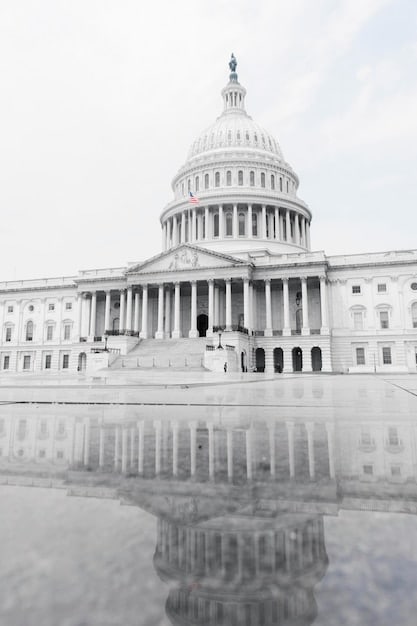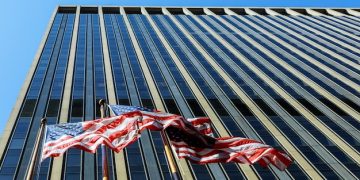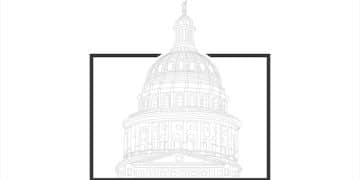Political Fallout: National Debt Consequences in 2025

The potential political consequences of the rising national debt in 2025 include increased polarization, shifts in government spending priorities, and potential challenges to the stability of the US dollar, affecting both domestic and international policy.
As the national debt continues its upward trajectory, understanding its potential political consequences becomes crucial. What could the rising national debt mean for the political landscape in 2025? This article delves into the possible shifts in policy, voter sentiment, and international relations that could arise from this growing financial burden, offering insights into the challenges and opportunities that lie ahead.
Understanding the Scale of the National Debt
Before diving into the political fallout, it’s essential to grasp the magnitude of the national debt. The sheer size of the debt can influence political discourse and policy decisions, setting the stage for significant changes.
The US national debt is the total amount of money owed by the federal government. It’s accumulated over time through budget deficits, where the government spends more than it collects in revenue. As of 2024, the national debt has reached staggering levels, raising concerns about its sustainability and long-term implications.
Factors Contributing to Debt Growth
Several factors contribute to the growth of the national debt. These include government spending on programs like Social Security and Medicare, defense spending, tax cuts, and economic downturns that reduce tax revenue.
- Increased Entitlement Spending: Programs like Social Security and Medicare are growing as the population ages, placing greater demands on the federal budget.
- Tax Cuts: Significant tax cuts can reduce government revenue, leading to larger deficits and increased borrowing.
- Economic Downturns: Recessions and other economic shocks can decrease tax revenue while increasing the need for government spending on unemployment benefits and stimulus measures.
- Defense Spending: Military expenditures, particularly during times of war or increased global tensions, can add significantly to the national debt.
Understanding these factors is crucial to comprehending the political choices that may arise as policymakers grapple with managing the debt.

Potential Shifts in Government Spending Priorities
One of the most direct political consequences of a rising national debt is the potential for shifts in government spending priorities. Policymakers may face difficult choices about which programs to fund and which to cut.
With a growing debt burden, pressure mounts on the government to reduce spending and balance the budget. This can lead to contentious debates over which areas of the budget should be prioritized.
Cuts to Social Programs
Social programs like Social Security, Medicare, and Medicaid, often the largest portions of the federal budget, could face cuts. Such cuts can have significant political ramifications, particularly among voters who rely on these programs.
Reducing funding for these programs can lead to backlash from advocacy groups, beneficiaries, and political opponents who argue that these programs are essential for the well-being of vulnerable populations.
Impact on Infrastructure and Education
Investments in infrastructure and education could also be affected. With limited resources, the government may delay or reduce funding for critical infrastructure projects and educational initiatives.
- Infrastructure Projects: Postponing infrastructure improvements can lead to deteriorating roads, bridges, and public transportation systems, affecting economic growth and public safety.
- Educational Initiatives: Reducing funding for schools and universities can impact the quality of education, potentially leading to a less skilled workforce and reduced economic competitiveness.
- Research and Development: Cuts to research and development can stifle innovation and technological advancements, hindering long-term economic growth.
These shifts in spending priorities can significantly impact various segments of the population and the overall health of the economy, creating political challenges for elected officials.
Increased Political Polarization
The national debt can exacerbate existing political divisions, leading to increased polarization and gridlock. Differing ideologies and priorities can make it difficult for lawmakers to reach consensus on how to address the debt.
The debate over how to manage the national debt often falls along partisan lines. Republicans and Democrats tend to have different viewpoints on taxation, spending, and the role of government, making compromise challenging.
Partisan Divides on Taxation
Democrats generally favor higher taxes on corporations and wealthy individuals to fund government programs and reduce the deficit. Republicans, on the other hand, often advocate for tax cuts to stimulate economic growth, even if it means increasing the debt.
These fundamental differences in tax philosophy can lead to gridlock in Congress, as lawmakers struggle to find common ground on tax policy.
Spending Priorities and Ideological Differences
Beyond taxation, disagreements over spending priorities further fuel political polarization. Democrats often prioritize social programs and investments in education and infrastructure, while Republicans tend to favor defense spending and reduced government regulation.
- Social Programs vs. Defense: The allocation of resources between social programs and defense often becomes a major point of contention, with each party advocating for their preferred areas of spending.
- Regulation: Republicans often argue that government regulations stifle economic growth, while Democrats tend to see regulations as necessary to protect consumers and the environment.
- Budget Deficits: Differing views on the appropriateness of budget deficits can also contribute to political polarization. Republicans often criticize Democrats for excessive spending, while Democrats argue that investments in certain areas are necessary for long-term prosperity.

Impact on International Relations
A rising national debt can also have significant implications for international relations. The US’s fiscal health affects its standing in the world and its ability to exert influence on global affairs.
A large national debt can weaken the perception of the US as a stable and reliable economic power. This can undermine its ability to lead on global issues and influence international policies.
The Role of the US Dollar
The US dollar’s status as the world’s reserve currency could be threatened by a growing national debt. If investors lose confidence in the US’s ability to manage its debt, they may seek alternative currencies, potentially weakening the dollar.
A weaker dollar can lead to increased import prices, inflation, and reduced purchasing power for Americans. It can also make it more expensive for the US to borrow money internationally.
Influence on Trade and Foreign Policy
The national debt can also affect the US’s ability to engage in trade negotiations and foreign policy initiatives. Countries may be less willing to make concessions to the US if they perceive its economic stability as being at risk.
- Trade Negotiations: A weakened economic position can reduce the US’s leverage in trade negotiations, potentially leading to less favorable trade deals.
- Foreign Aid: The government may be forced to reduce foreign aid and assistance to other countries, diminishing its ability to promote its interests and values abroad.
- Military Deployments: Constraints on the federal budget can also impact military deployments and defense strategies, limiting the US’s ability to respond to global crises.
Potential for Economic Instability
A persistently high national debt can create conditions for economic instability. The debt can crowd out private investment, increase interest rates, and heighten the risk of financial crises.
As the government borrows more money to finance its debt, it can drive up interest rates. Higher interest rates can make it more expensive for businesses to borrow money for investment, potentially slowing economic growth.
Crowding Out Private Investment
Government borrowing can also crowd out private investment by reducing the availability of capital for businesses. This can hinder innovation, job creation, and overall economic productivity.
Businesses may be less likely to invest in new projects or expand their operations if they face higher borrowing costs and increased competition for capital.
Risk of Financial Crises
A large national debt can increase the risk of financial crises. If investors lose confidence in the government’s ability to repay its debt, they may sell off their holdings of US Treasury bonds, causing interest rates to spike and potentially triggering a financial panic.
- Investor Confidence: Maintaining investor confidence is crucial for preventing financial instability. The government must demonstrate its commitment to fiscal responsibility and sustainable debt management.
- Debt Sustainability: Ensuring the long-term sustainability of the national debt is essential for avoiding a debt crisis. This requires a combination of spending cuts, tax increases, and economic growth.
- Contingency Plans: Policymakers should develop contingency plans for managing a potential debt crisis, including measures to stabilize the financial system and protect vulnerable populations.
Possible Policy Responses and Their Political Viability
Addressing the rising national debt will require a mix of policy responses. However, each potential solution faces political challenges and may be difficult to implement.
There are several policy options available for addressing the national debt, including spending cuts, tax increases, and entitlement reforms. Each of these options comes with its own set of political obstacles.
Spending Cuts vs. Tax Increases
One of the central debates is whether to prioritize spending cuts or tax increases. Republicans tend to favor spending cuts, arguing that they are necessary to reduce the size and scope of government. Democrats, on the other hand, often advocate for tax increases, particularly on the wealthy, to fund government programs and reduce the deficit.
Finding a balance between spending cuts and tax increases that is acceptable to both parties requires compromise and a willingness to make difficult choices.
Entitlement Reform
Reforming entitlement programs like Social Security and Medicare is another potential solution. However, this is often politically sensitive, as these programs are popular with voters.
- Raising the Retirement Age: Increasing the age at which people can retire and receive Social Security benefits is one option.
- Adjusting Benefit Formulas: Modifying the formulas used to calculate Social Security and Medicare benefits is another potential approach.
- Means Testing: Implementing means testing for certain benefits could help target resources to those who need them most.
| Key Point | Brief Description |
|---|---|
| 💰 Spending Shifts | Potential cuts to social programs like Social Security and Medicare. |
| ⚔️ Polarization | Increased partisan divides over taxes, spending, and debt management. |
| 🌎 Global Impact | Weakened US economic standing and potential challenges to the dollar. |
| 📈 Instability | Risk of crowding out private investment leading to economic downturn. |
Frequently Asked Questions
▼
As of 2024, the US national debt has reached historic levels, totaling trillions of dollars. This significant debt raises concerns about the nation’s long-term financial stability and potential policy changes.
▼
A rising national debt can force the government to prioritize debt repayment, potentially leading to cuts in essential social programs, infrastructure projects, and educational initiatives to balance the budget.
▼
Tax cuts, particularly large-scale ones, can significantly reduce government revenue, contributing to budget deficits and an increase in the national debt if not offset by spending cuts.
▼
A substantial national debt can erode investor confidence, potentially leading to a sell-off of US Treasury bonds and a weakening of the dollar, increasing import prices and inflation pressures.
▼
Policy options include spending cuts across various sectors, increasing taxes on corporations and high-income earners, reforming entitlement programs, and implementing fiscal responsibility measures.
Conclusion
The rising national debt presents significant political and economic challenges for the United States. Addressing these challenges requires careful policy choices and a willingness to compromise across party lines. The decisions made in the coming years will have far-reaching consequences for the nation’s future.





